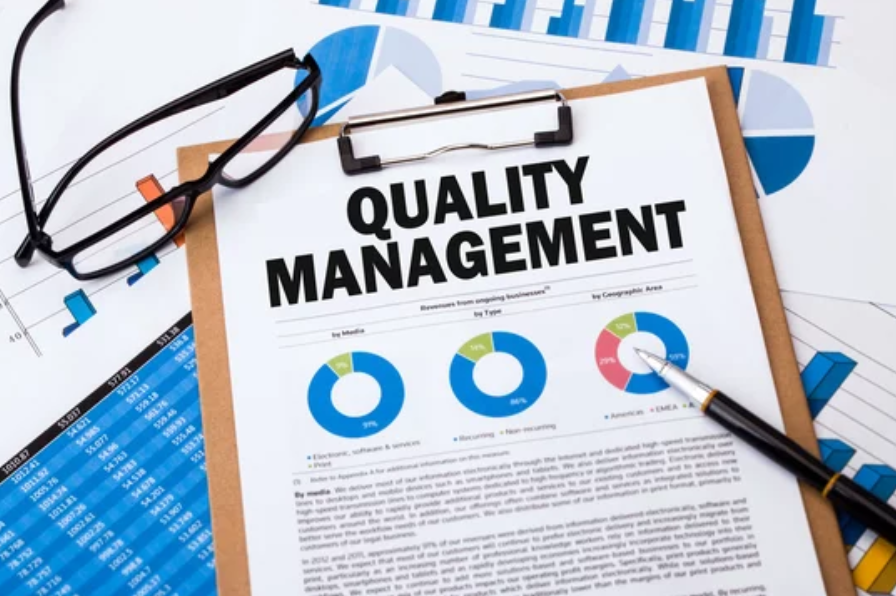Call for Public Comments on Draft Revised Guidelines for Quality Risk Management
Effective February 28, 2022, Draft Revised Guidelines for Quality Risk Management The call for public comments on the Draft Guidelines for Quality Risk Management began on February 28, 2012. The call for public comments has been opened. The deadline is April 1, 2022.
This revision of the guideline follows the revision of ICH Q9 in November 2021; ICH Q9(R1) became Step 2 on November 18, 2021, and was published for public comment.
The author believes that ICH Q9 “Guidelines for Quality Risk Management” is easy to read, However, the content is abstract and lacking in specificity, and we have always believed that more specific guidelines (e.g., examples) are needed for actual application.
If you actually try to create an SOP (i.e., a specific procedure document) that complies with the guidelines for quality risk management, you will find that it is very difficult. The following is a brief overview of the process.
ICH Q9 “Guidelines for Quality Risk Management” is included in Quality, but Pharmaceutical development stages are also in scope, so care must be taken.
During the development phase, “quality risk management is part of knowledge accumulation. This allows the appropriate risk controls to be determined at the time of technology transfer.
In Q9(R1), “continuous improvement” “Pharmaceutical Quality System” “Status managed ” and “uncertainty” were newly used terms.
Continuous Improvement,” “Pharmaceutical Quality System,” and “State of Control” are ICH Q10, which would be aligned with ICH Q10.
The definition of risk in ICH Q9 is “the combination of the probability of occurrence of harm and the severity of its manifestation,” consistent with ISO/IEC Guide 51. It is interesting to note that it also cites the ISO 9001 definition of risk, but it is more abstract and may be difficult for the general public to understand.
In addition, although the scope of the amendment remains unchanged, the “lack of stable supply” of pharmaceutical products has also been added to the list of added to the risk.
In other words, risks to quality include situations that could affect the stable supply of the product and could potentially harm patients.
In addition, risks in the “supply chain” were added. This is because while a diverse manufacturing and supply chain can provide a stable supply of products, increasingly complex supply chains can lead to interdependencies that can lead to systemic quality/manufacturing risks that affect the robustness of the supply chain.
When implementing quality risk management, experts in the appropriate areas should include the quality department, business development, engineering, regulatory, manufacturing, sales and marketing, supply chain, legal, statistical, clinical, etc. should be included, according to the report.
In assessing risk, subjectivity can be brought into quality risk management
This is because the “probability of occurrence” and “severity” included in the definition of risk are often subjective rather than objective. How scientific (evidence-based) assessments are made is important.
For example, let’s say that during a risk assessment, experts were gathered in a conference room to discuss the issue. However, if the evaluation ends up being subjective, it is not necessarily true that the same results will be obtained when the risk assessment is conducted again at a different time, in a different place, or with different people.
As a result, there is a risk that the patient (subject) will be left to foot the bill.
To this end, he warned that it is necessary to ensure that the use of knowledge is implemented.
In Chapter 4, “General Risk Management Process,” the previous “risk identification” was corrected to “hazard identification” was corrected to ““.
The author has always explained in seminars that it is impossible to identify risks from the beginning and that hazards must be identified. Therefore, I feel that this correction is a welcome one. (I am glad to see this correction, as I no longer have to explain it in seminars.)
Chapter 5, “Risk Management Methodology,” has been enhanced.
The following two chapters have been added
5.1 Quality Risk Management Format
5.2 Risk-based Decision Making
5.1 In “Forms of Quality Risk Management,” the authors state, “Forms of quality risk management are not a binary concept, i.e., formal/non-formal.” The “Form of Quality Risk Management” is not a binary concept, i.e., formal/non-formal.
This is because a form of quality risk management can be thought of as a continuous concept that ranges from low to high.
It also states that “resource constraints should not be used as a justification for reducing the level of formality used in the quality risk management process.” This is true. That may be true.
Chapter 6, “Integrating Quality Risk Management into Corporate and Regulatory Affairs,” was also enhanced.
In Appendix I, the title has been corrected from the previous “Risk Management Methods and Techniques” to “Quality Risk Management Methods and Techniques”.
However, as far as content is concerned, there are almost no changes, although some additions have been made.
In Appendix II, II.9 “Quality Risk Management as Part of Supply Chain Management” was added.
・Variations in the manufacturing process and the state of being able to control them
・Manufacturing Facilities
・Supervision and relationship with suppliers
and others.
related product
[blogcard url=”https://ecompliance.co.jp/SHOP/O067.html” title=”【VOD】【180分で要点を学ぶ】改正GMPセミナーシリーズ 品質リスクマネジメント編” content=”2021年8月1日からGMP省令が改正されます。改正GMP省令は、ICHやPIC/S等の国際標準のGMP基準に整合されました。
特にICH-Q9(品質リスクマネジメント)やICH-Q10(医薬品品質システム)の遵守が求められます。
医薬品等の製造・品質管理において、あらゆるリスクを低減し、患者の安全性を担保することは極めて重要です。
これまでICH-Q9 「品質リスクマネジメントに関するガイドライン」は課長通知として発出されていました。
品質管理・品質保証と品質リスクマネジメントは表裏一体です。どちらもPDCAサイクルを持ち、常に実践することが求められます。
しかしながら、ICH-Q9 「品質リスクマネジメントに関するガイドライン」は難解です。
改正GMP省令においては、適切に品質リスクマネジメントが活用されるよう、ICHQ9の原則に則して手順書の作成と実施が求められます。
しかしながら、品質リスクマネジメントでは、特定の部門を設置したり、新たな手順書を1冊作成すれば良いというものではありません。
すべての既存の組織におけるすべての手順書に品質リスクマネジメントに関する要素を盛り込んでいく必要があります。
本セミナーでは、難解なICH Q9を分かりやすく解説し、品質リスクマネジメントの要点をまとめます。
また、品質リスクマネジメント手順書のサンプルも配布いたします。”]
改正GMP省令は、ICHやPIC/S等の国際標準のGMP基準に整合されました。
特にICH-Q9(品質リスクマネジメント)やICH-Q10(医薬品品質システム)の遵守が求められます。
医薬品等の製造・品質管理において、あらゆるリスクを低減し、患者の安全性を担保することは極めて重要です。
これまでICH-Q9 「品質リスクマネジメントに関するガイドライン」は課長通知として発出されていました。
品質管理・品質保証と品質リスクマネジメントは表裏一体です。どちらもPDCAサイクルを持ち、常に実践することが求められます。
しかしながら、ICH-Q9 「品質リスクマネジメントに関するガイドライン」は難解です。
改正GMP省令においては、適切に品質リスクマネジメントが活用されるよう、ICHQ9の原則に則して手順書の作成と実施が求められます。
しかしながら、品質リスクマネジメントでは、特定の部門を設置したり、新たな手順書を1冊作成すれば良いというものではありません。
すべての既存の組織におけるすべての手順書に品質リスクマネジメントに関する要素を盛り込んでいく必要があります。
本セミナーでは、難解なICH Q9を分かりやすく解説し、品質リスクマネジメントの要点をまとめます。
また、品質リスクマネジメント手順書のサンプルも配布いたします。”]
]]>


Comment